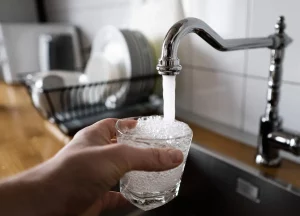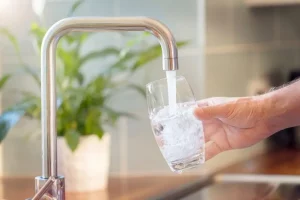What is reverse osmosis?
Reverse osmosis (or RO) is a process where water pressure is applied to force the source water through semipermeable membrane. This leaves behind solid contaminants on one side and allows the water molecules to pass on to the other.
Imagine a screen door. It allows air molecules to pass though, but it does not allow pests or any other larger objects to get through. The RO membrane also has tiny pores which allow water to flow through while filtering out larger objects.
What is a reverse osmosis filter system?
Reverse osmosis refers to the opposite of osmosis. Osmosis happens naturally, without the use of any energy. To reverse the process of osmosis, you must apply sufficient pressure to the concentrated solution to push it through the RO membrane.
A high-pressure pump is usually used to increase the pressure on the RO membrane’s concentrated side. This forces the water across the membrane and leaves almost no contaminants in the reject stream. The source water concentration (aka the feed water) will determine the pressure. The greater the concentration of the feed water, it will take more force to overcome the natural pressure.
Here’s how it works:
Prefiltration is performed when the feed water enters the RO system. The prefiltration process typically involves a sediment and carbon filter to remove chlorine and other pollutants that could damage or clog the RO membrane.
The water is then forced through the RO membrane. This pressure will be enough to overcome the osmotic pressure. The semipermeable barrier allows water molecules to pass through, but dissolved contaminants can’t. Permeate is the water that passes through the RO membrane. It typically has 95% to 99 percent solid contaminants removed. The system also discharges rejected pollutants through the reject stream. The system either discharges the reject stream to the drain, or it is fed back into its feedwater system for recycling through the RO system.
The water is filtered and flows to the storage tank. It is then stored until it is needed. The reverse osmosis process continues to filter the water until it is fully filtered. After that, it shuts off.
When you turn on your water faucet, the water is filtered through another postfilter before it reaches your faucet. Excellent post-filters are inline water filters. Inline water filters are installed under the sink and out of sight. Inline water filters can also be used in refrigerators, icemakers, coolers and water fountains. Inline water filters are designed to work continuously. This means that you only need to turn the faucet handle. Inline water filters that are best for safe and healthy water use have excellent filtering abilities. They are also compatible with many appliances and are easy to replace and install.











